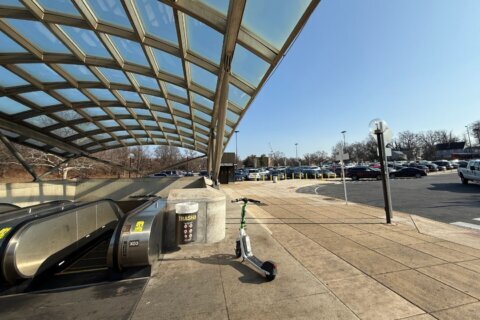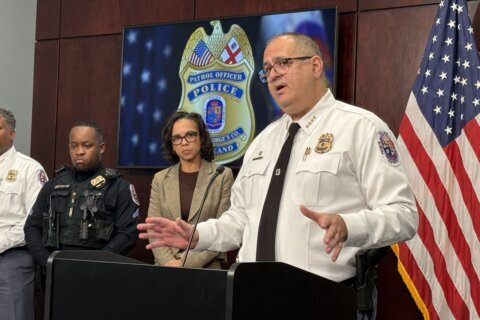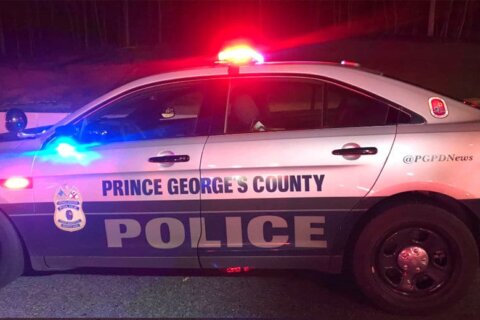Volunteers and historians continue to scour wooded land where the former Jesuit-owned Whitemarsh Plantation used to operate in Bowie, and where Sacred Heart Catholic Church now sits.
Church leaders concede they’re at the very beginning of a long process, but the scope of the work has grown significantly since last month.
In recent weeks, the number of flags on the hillside between the chapel and Maryland Route 450 has increased substantially.
In most cases, the pink or orange flags are planted in places where someone might have been buried, and more likely than not, any remains in the hillside there either belong to someone who was enslaved on the property when it was a working tobacco plantation, or one of their descendants who worked the land after slavery.
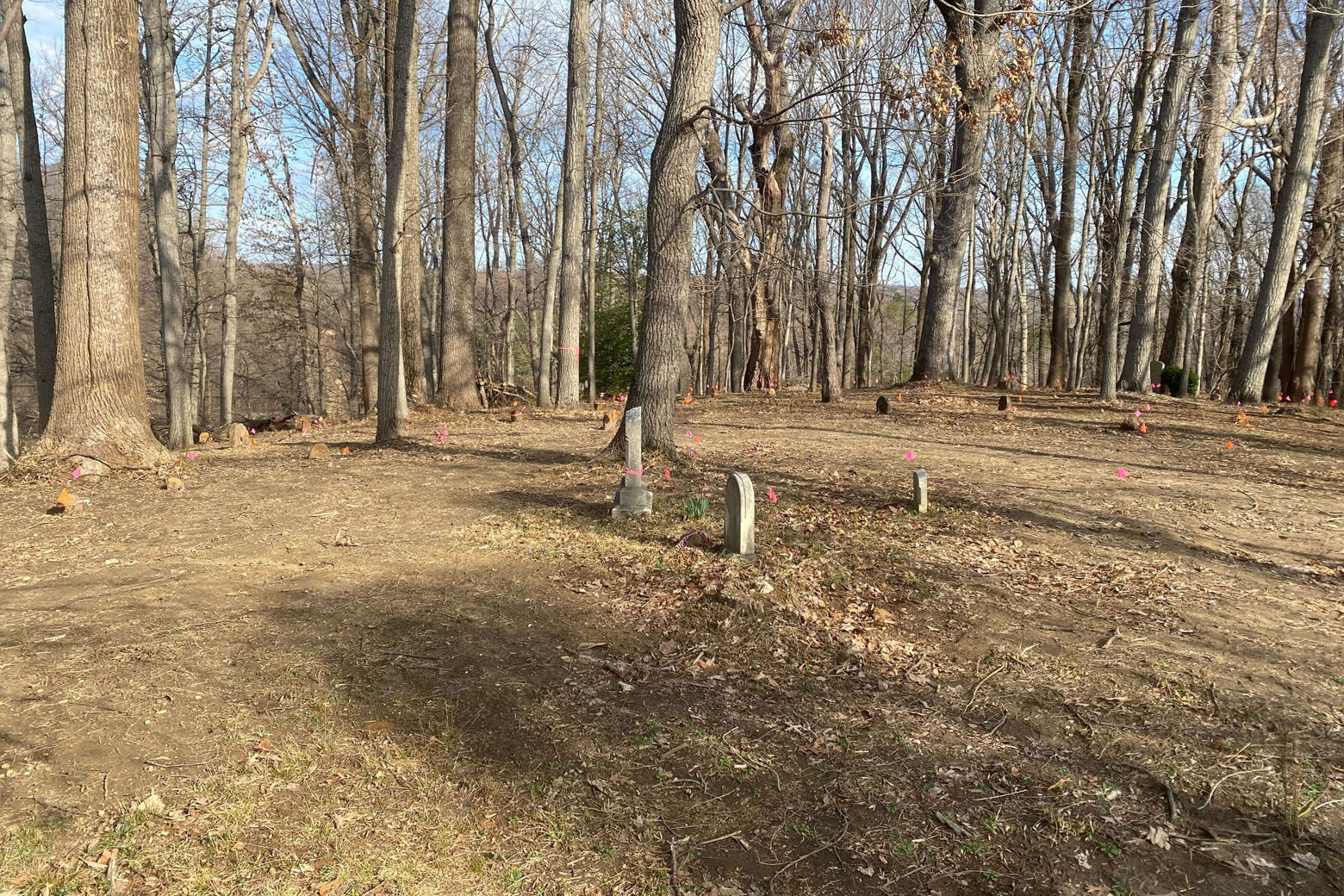
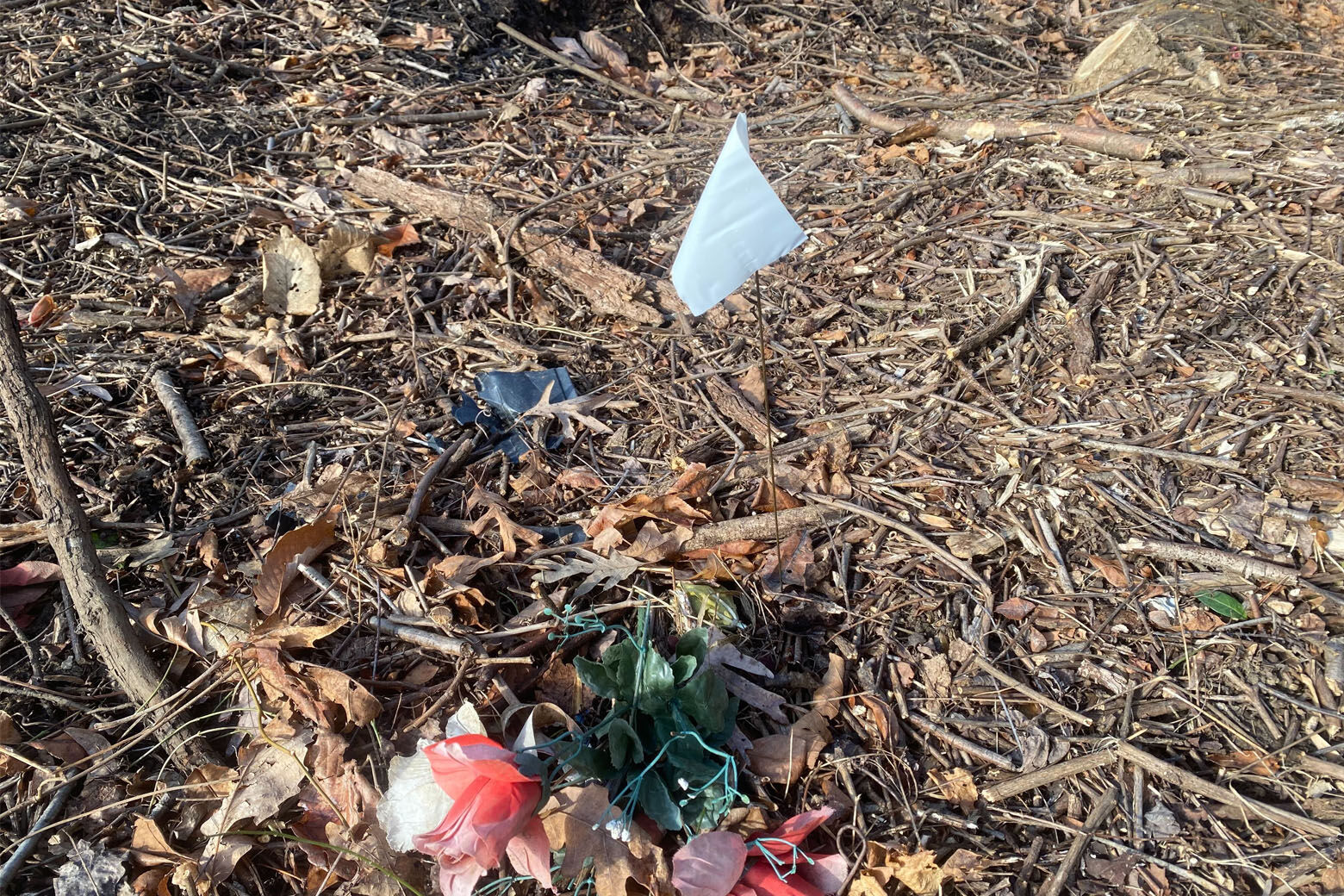
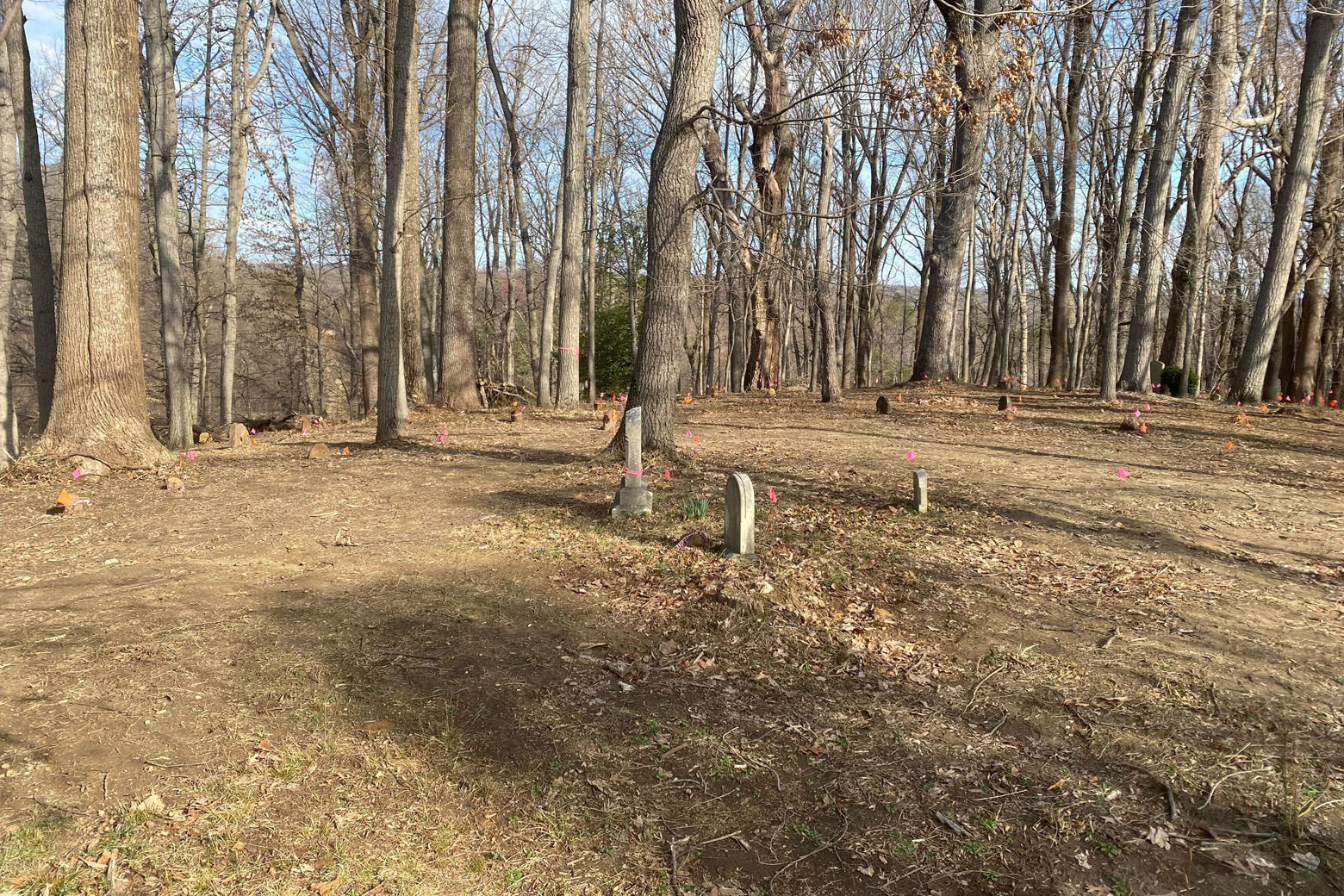
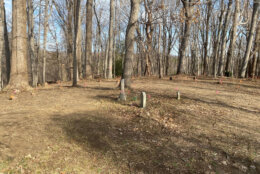

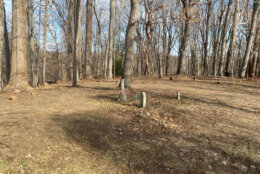
Only a fraction of the 30 acres of land the church owns there have been studied so far.
Taking it slow
“It’s taken time. We want to go slow,” said Father Michael Russo, who is helping to oversee this effort for Sacred Heart. “There’s a lot of flags on the hill. Not all of them are grave markers. But most are. Hundreds. We’re at hundreds — 300 to 500, somewhere in there.”
That’s how many unmarked graves may be on the land now, though more study of the ground still needs to happen. Likewise, more of the property also needs to be surveyed, too.
“There’s still more to go,” Russo said.
When volunteers show up to help clear out the dead leaves and brush that cover a lot of the land, they’re told not to move anything they find on the ground.
“The area of probable cemetery is a lot bigger than we thought, and just keeps going” said Russo. “We’re still in the beginning stages. It’s been a month and a half of heavy work, but we’re still at the beginning. We have a lot of work to do going forward.”
National Historic Place designation?
More help could be coming in the future with the help of local lawmakers. In recent days, Maryland state Del. Adrian Boafo of Bowie, who is also Catholic, sent a letter to the director of the National Park Service asking that the property be designated as a National Historic Place.
If that happens, it would have two major impacts on the land, beginning with a prohibition of future development on the land around Sacred Heart still owned by the Jesuits.
A few years ago there were discussions between the Jesuits and developers to build hundreds of new homes on property, which surrounds both sides of Sacred Heart and extends to the other side of Maryland Route 450. More recently, Jesuit leaders have sought to build a new facility, one that’s much smaller in scope, that would be used for quiet, religious retreats.
A designation would also make further exploration eligible for “a lot of grant money and opportunities nationally, which is really critical for this project,” said Boafo. “We need the resources at that site to really understand, in an expedited way, what happened.”
The Jesuit-owned property adjacent to Sacred Heart has not been surveyed yet, and Boafo is hopeful that will happen in the future, but said so far there hasn’t been much response.
‘Way bigger than we thought’
But as news of the discoveries have become more public in recent weeks, Boafo said it’s clear to him that this is far bigger than just a church issue, or even a Bowie issue. It’s drawing statewide interest and attention.
“So many constituents were reaching out about this issue, but more interestingly enough, colleagues on the floor, colleagues from Montgomery County, colleagues from Howard County, were reaching out as well because their constituents were concerned that members of their family may have been buried there as well and not getting the proper due in death,” said Boafo. “It’s way bigger than we thought.”
In fact, Boafo said this might be the largest number of unmarked grave sites found in recent history.
“We have to take this very seriously,” said Boafo. “We have to get dollars to that site and we have to make sure we preserve it as well.”
It’s a push and recognition that Russo said the church welcomes, and he’s hopeful the park service will move ahead with the designation.
“We welcome that,” said Russo. “We’re very open to that. There’s already a lot of historic significance known about this property and we’re uncovering a lot more. I think it means a lot to the parish and a lot to the descendants of those buried here to have that designation and to have that support coming from local officials as well.”
He said it’s needed in part because the project has gotten way bigger than he envisioned just a few months ago.
“It’s massive,” said Russo. “This is a massive project, a massive undertaking.”


